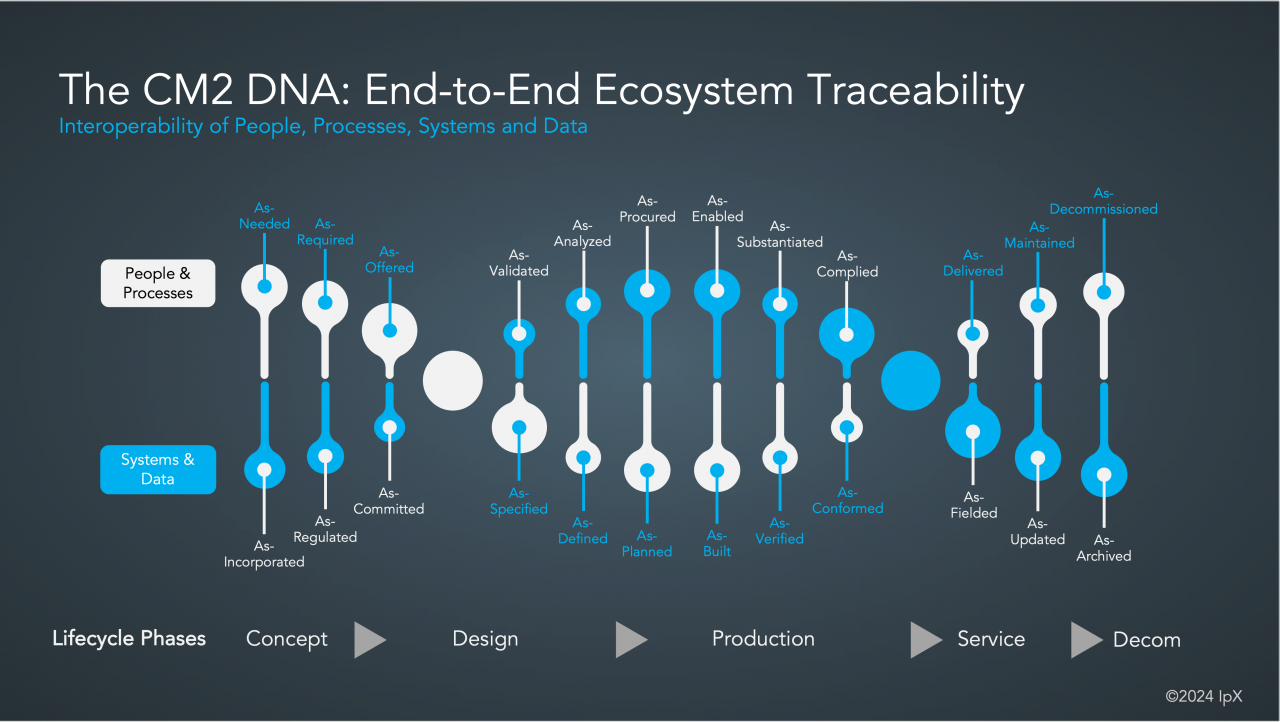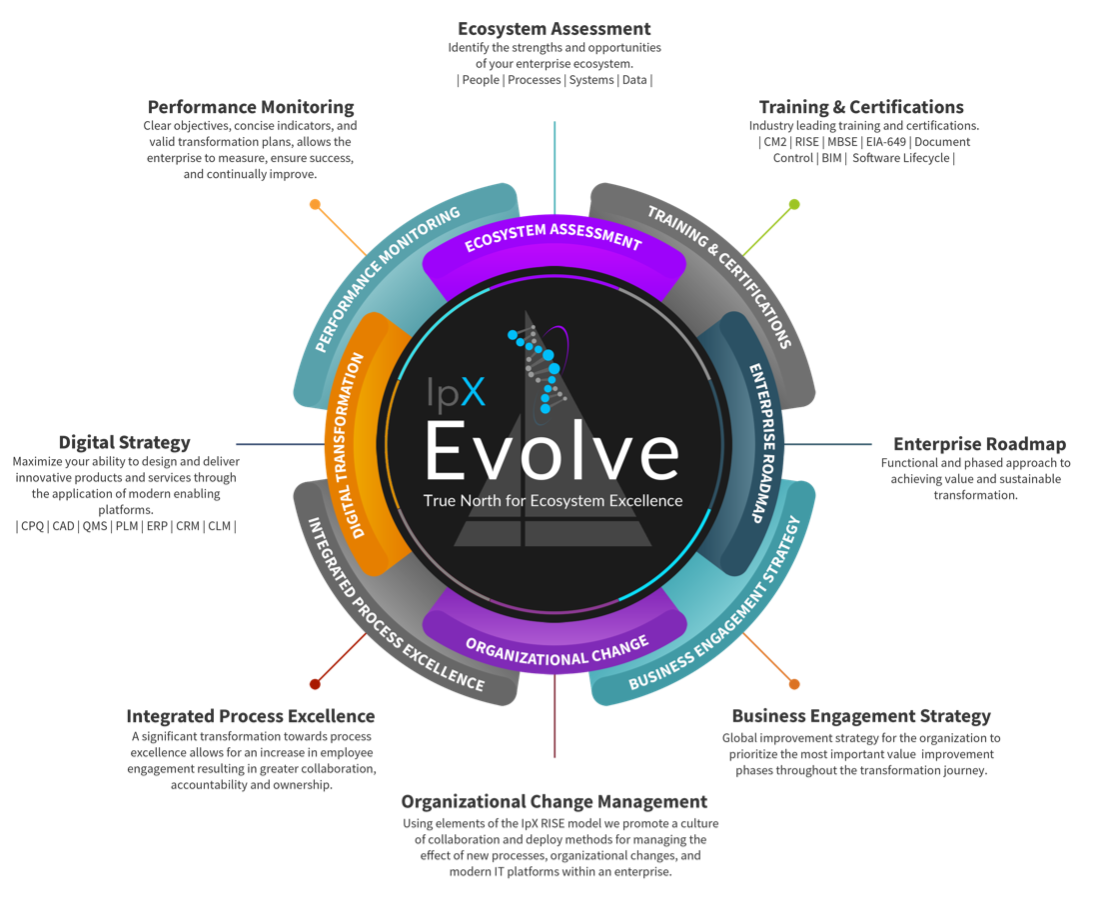Exploring the Overuse and Hype of Digital Transformation
02/26/2024
Joseph Anderson, President
Exploring the Overuse and Hype of Digital Transformation
It's Time to Pick a Strategy Beyond a Buzzword for Manufacturing Products with Quality and Deploying PLM Solutions Correctly

In recent years, the buzz around "digital transformation" has permeated the field of Product Lifecycle Management (PLM), promising revolutionary changes and efficiency gains. However, amidst the hype, the fundamental principles of PLM risk being overshadowed, leading to ineffective implementations and wasted investments. The disparity between the substantial financial investments in PLM software and the inadequate attention given to modernizing processes, ensuring regulatory compliance, and safeguarding intellectual property (IP) has continued to compound. Through the lens of two bingo cards-one laden with marketing terms synonymous with digital transformation and another emphasizing sound CM2 principles and IP considerations-we can dissect the prevailing issues and propose a recalibration towards a more holistic approach to the processes and systems that encompass PLM.
Buzzword BINGO: Digital Transformation
Welcome to the expedition through the jungle of "digital transformation" in PLM. We encounter a bingo card overflowing with tantalizing buzzwords that have become the darlings of boardroom conversations. From the ethereal promises of cloud PLM to the seemingly magical allure of blockchain technology, these terms captivate audiences with visions of transformative change and unparalleled competitive advantages. Product Lifecycle Management (PLM) stands at the intersection of innovation, efficiency, and regulatory compliance, serving as the backbone of modern manufacturing and product development.
Over the years, the discourse surrounding PLM has been inundated with the buzzword du jour: "digital transformation." While the promise of digital transformation is alluring, it often obscures the core principles that underpin effective PLM implementation. The pervasive use of digital transformation rhetoric in PLM and its implications for organizational success have created a fog that has caused some industrial giants to stumble.
Recall, Withdrawals and Safety Alerts
But as the layers of digital veneer are peeled back, one will uncover a hidden cavern of challenges. Amidst the clamor for innovation and efficiency, lies the overlooked and oft-neglected realm of managing product and process changes - an essential but begrudgingly acknowledged aspect of any transformation. While the spotlight shines brightly on the glitz and glamour of digital transformation, the mundane yet essential task of effective product and process change communication often lurks in the shadows, relegated to the role of a necessary evil.
Internally, the communication surrounding engineering design changes, manufacturing process overhauls, and new product introductions is often treated as a mundane task, relegated to the realm of obligatory emails and hastily convened meetings. Engineers and operators are left to decipher the intricacies of new workflows and specifications without the guidance or clarity they deserve. This lack of communication can breed confusion, errors, and production delays, hindering the very changes it seeks to facilitate.
Externally, the repercussions reverberate much the same. Suppliers, partners, and end-users are left grappling with the fallout of poor quality, recalls, and regulatory fines stemming from organizations' singular focus on IT solutions for PLM. The rush to embrace new technologies can amplify the disconnect between stakeholders, exacerbating the consequences of subpar communication and inadequate coordination. As recalls mount and fines accumulate, trust erodes, and relationships strain under the weight of disappointment and frustration. It's a sobering reminder that effective communication and collaboration are not luxuries but imperative lifelines in navigating the complexities of PLM and ensuring product integrity throughout the supply chain.
Digital Thread (CM2 Ecosystem DNA) & Digital Twin
The concept of the digital thread represents a holistic approach to managing data across the entire product lifecycle, from design and development to manufacturing and maintenance. It aims to create a seamless flow of information, allowing different stakeholders to access and contribute to a unified digital representation of the product. However, realizing the full potential of the digital thread requires overcoming significant challenges.

CM2 principles play a crucial role in establishing the digital thread as the backbone of effective product lifecycle management. CM2 emphasizes the importance of configuration management, ensuring that accurate and up-to-date product data is accessible throughout the lifecycle. By adhering to the CM2-500 and CM2-600 standards, organizations can establish a common language and framework for managing product configurations, changes, and documentation, facilitating collaboration and information sharing across functional areas and disciplines.
However, achieving a truly integrated digital thread requires overcoming siloed data, legacy systems, and cultural barriers which obstruct efforts to integrate data across departments and disciplines. Legacy systems may lack interoperability, making it difficult to synchronize information effectively. Cultural resistance to change can further impede collaboration and information sharing, limiting the effective

ness of the digital thread in driving innovation and efficiency.
In this context, CM2 serves as the thread that binds together disparate data sources and systems, enabling a seamless flow of information across the product lifecycle. By establishing standardized processes and tools for configuration management, CM2 ensures that product data remains clear, concise, valid, and accessible to all stakeholders. This unified approach to data management lays the foundation for a robust digital thread, enabling organizations to realize the full benefits of digital transformation in product development and lifecycle management.
Digital twins, on the other hand, offer virtual replicas of physical products, providing insights into their performance and behavior in real-time. They enable engineers to simulate different scenarios and optimize product design and operation without the need for physical prototypes. However, the hype surrounding digital twins can sometimes overshadow the practical complexities involved in their implementation. Ensuring data synchronization between the physical and virtual representations requires robust integration capabilities and data management processes.
Model fidelity, or the accuracy of the virtual representation compared to the physical product, is crucial for reliable simulation and analysis. Scalability is another challenge, particularly for large and complex products or systems, as maintaining synchronization and performance across multiple digital twins can strain resources and infrastructure. Despite these challenges, digital twins hold immense potential for improving product development, performance monitoring, and predictive maintenance when implemented effectively.
Product and Process Lifecycle Management
Clear. Concise. Valid. Accessible.

While the winds of Product Lifecycle Management (PLM) blow incessantly with the advent of new technologies and non-referenced methodologies, it is imperative for organizations to anchor themselves to principles that ensure not just success, but genuine sustainability and scalability. Amidst the myriad strategies and buzzwords, CM2 intellectual property and principles emerge as the bedrock upon which PLM initiatives can flourish and withstand the test of time.
CM2, encapsulated within the metaphorical "Product and Process Lifecycle Management'' BINGO card, symbolizes a paradigm shift towards clarity, conciseness, validity, and accessibility in managing product lifecycles. It embodies a holistic approach, unifying disparate elements of PLM into a cohesive framework that fosters collaboration, innovation, and efficiency.
The essence of CM2 lies not merely in the individual squares of the BINGO card, but in the collective synergy they create. From the foundational "As Concepted Baseline" to the pinnacle of "Enterprise Configuration Management," each square represents a vital component of a broader narrative - a narrative of excellence in PLM. By embracing CM2 principles, organizations can transcend the limitations of traditional PLM approaches characterized by siloed data, fragmented processes, and inadequate communication. Instead, they can forge a path towards true PLM success, characterized by seamless information flow, regulatory compliance, and dynamic adaptability.

The investment in process excellence principles is not merely a strategic decision; it is an investment in the future resilience and competitiveness of the organization. It is a recognition of the interconnectedness of people, processes, systems, and data - and the transformative power that lies in harnessing this interconnectedness. It is not just about ticking boxes on a checklist; it is about embracing a mindset - a mindset that prioritizes clarity, collaboration, and continual improvement. It is about recognizing the invaluable role of CM2 in driving PLM excellence and unlocking the full potential of organizational initiatives. It is time for organizations to heed the call of process excellence, true quality and embark on a journey towards true product lifecycle management success.
In the ever-evolving landscape of business transformation, where the stakes are high and the journey is fraught with uncertainty, the timeless principles of respect, honesty, trust, and loyalty serve as guiding stars in the darkness. As we navigate the turbulent waters of PLM implementation, let us not be swayed by empty promises or flashy presentations. Instead, let us demand more from our partners and consultants - not just technical expertise, but integrity, transparency, and a proven track record of success.
Calibrate Your Compass for True North
Navigating Success with Integrity and Innovation...BINGO
Let us challenge the status quo and ask the tough questions: Why do PLM solution providers often make more money on their services than on their products? How can consultants claim to guide us through transformation if they've never charted the course themselves? It is time for organizations to align their actions with their values and demand accountability from those who seek to lead and support them.
In today's fast-paced business environment, where innovation is king and efficiency is paramount, it's easy to get caught up in the allure of the next big IT solution. However, true success lies in designing, manufacturing, and servicing products with quality and lifetime value as the primary objectives. Innovation doesn't have to be sacrificed for doing things the right way. It's time for CFOs to realize that there is just as much, if not more, ROI in investing in processes such as quality, speed, and compliance, as well as in people development and knowledge management, as there is for the next IT solution. By calibrating our compass to prioritize integrity, innovation, and investment in people and processes, we can chart a course towards sustainable success that transcends fleeting trends and delivers lasting value to our organizations and customers alike.
For in the end, it is not just about the destination, but the journey itself - and the integrity with which we navigate it. Does your audio match your video?

AUTHOR: Joseph Anderson
Joseph Anderson is the President of IpX and was instrumental in building the True North Enterprise Calibration™ model. He has more than 20 years of experience within the automotive, aerospace, marine and defense industries in various executive positions. Connect on LinkedIn
ALWAYS EVOLVE WITH IPX

IpX believes organizational sustainability, scalability and transformation are born from the continual evolution of people, processes, systems and data. Through our leading workforce development platform known as the IDEA Academy, our CM2 standard and certification courses, True North professional services, and digital solution advisement, we enable your organization to always evolve based on a functional blueprint for the ecosystem of tomorrow. Drive innovation, create a better customer experience, and enable your workforce as an organization built for change, speed, quality and resiliency.






